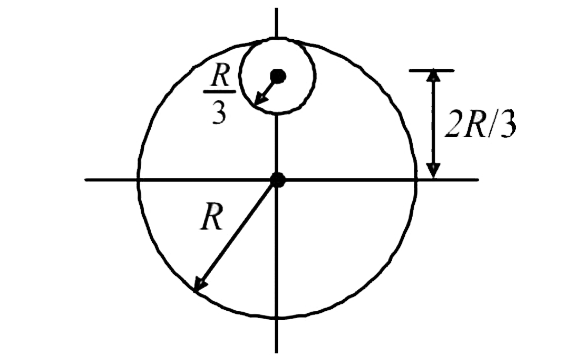Hensen's disc occurs in
Myofibril of striated muscle
Myofibril of unstriated muscle
Myofibril of heart muscle
None of the above.
The correct Answer is:A
Step-by-Step Solution:
1. Understanding the Question: The question asks where Hensen's disc occurs. We need to identify the type of muscle that contains Hensen's disc.
2. Types of Muscles: There are three main types of muscles in the human body:
- Striated muscles (skeletal muscles)
- Unstriated muscles (smooth muscles)
- Cardiac muscles (heart muscles)
3. Characteristics of Striated Muscles: Striated muscles have a distinct structure where myofibrils are arranged into units called sarcomeres. These sarcomeres exhibit alternating light and dark bands due to the presence of thick (myosin) and thin (actin) filaments.
4. Identifying Hensen's Disc: Within the sarcomere, there is a specific region known as the H zone or Hensen's disc. This region is characterized by the absence of actin filaments and consists solely of myosin filaments.
5. Evaluating the Options:
- Option 1: Myofibrils of striated muscles - This is correct as Hensen's disc is found in the H zone of striated muscle sarcomeres.
- Option 2: Myofibrils of unstriated muscles - Incorrect, as unstriated muscles do not have the same banding pattern.
- Option 3: Myofibrils of heart muscles - Incorrect, as cardiac muscles have a different structure and do not specifically refer to Hensen's disc.
- Option 4: None of the above - Incorrect, since option 1 is correct.
6. Conclusion: The correct answer is that Hensen's disc occurs in the myofibrils of striated muscles.
Final Answer: Hensen's disc occurs in the myofibrils of striated muscles.
---
- Striated muscles (skeletal muscles)
- Unstriated muscles (smooth muscles)
- Cardiac muscles (heart muscles)
- Option 1: Myofibrils of striated muscles - This is correct as Hensen's disc is found in the H zone of striated muscle sarcomeres.
- Option 2: Myofibrils of unstriated muscles - Incorrect, as unstriated muscles do not have the same banding pattern.
- Option 3: Myofibrils of heart muscles - Incorrect, as cardiac muscles have a different structure and do not specifically refer to Hensen's disc.
- Option 4: None of the above - Incorrect, since option 1 is correct.
Topper's Solved these Questions
- BOOK - DINESH PUBLICATION ENGLISHCHAPTER - LOCOMOTION AND MOVEMENTEXERCISE - CHECK YOUR GRASP10videos
LOCOMOTION AND MOVEMENT
- BOOK - DINESH PUBLICATION ENGLISHCHAPTER - LOCOMOTION AND MOVEMENTEXERCISE - CHECK YOUR GRASP10videos
LOCOMOTION AND MOVEMENT
- BOOK - DINESH PUBLICATION ENGLISHCHAPTER - LEAFEXERCISE - CYG10videos
LEAF
- BOOK - DINESH PUBLICATION ENGLISHCHAPTER - MAMMALIA [MAMMA - BREAST]EXERCISE - Brain Teasers - I100videos
MAMMALIA [MAMMA - BREAST]
Similar Questions
Knowledge Check
- Question 1 - Select One
From a uniform circular disc of radius R and mass 9M, a small disc of radius R3 is removed as shown in the figure. The moment of inertia of the remaining disc about an axis perpendicular to the plane of the disc and passing through centre of disc is :
 A4MR2B409MR2C40MR2D379MR2
A4MR2B409MR2C40MR2D379MR2
Inter-articular disc occurs in
View SolutionAll the florets are disc florets in
View SolutionFrom a circular disc of radius R and mass 9 M , a small disc of radius R/3 is removed from the disc. The moment of inertia of the remaining disc about an axis perpendicular to the plane of the disc and passing through O is
 View Solution
View SolutionA uniform disc is acted by two equal forces of magnitude F. One of them, acts tangentially to the disc, while other one is acting at the central point of the disc. The friction between disc surface and ground surface in nF. If r be the radius of the disc, then the value of n would be (in N)
View SolutionThe specimen is taken in the form of 'disc' in Lee's disc method to find the thermal conductivity is a bad conductor. Why?
View SolutionThe ratio of the radii of gyration of a circular disc and a circular ring of the same radii about a tangential axis perpendicular to plane of disc or ring is
View SolutionA disc of radius r is cut from a larger disc of radius 4r in such a way that the edge of the hole touches the edge of the disc. The centre of mass of the residual disc will be a distance from centre of larger disc :-
View Solution

